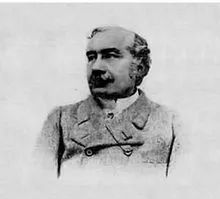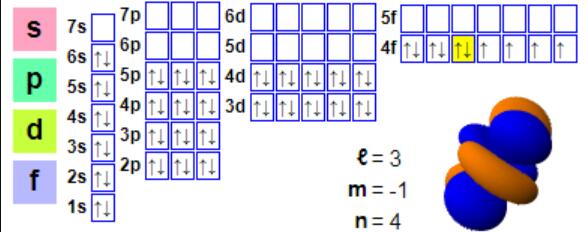Dysprosium, symbol Dy and atomic number 66. It is a rare earth element with metallic luster. Dysprosium has never been found as a single substance in nature, although it exists in various minerals such as yttrium phosphate.

The abundance of dysprosium in the crust is 6ppm, which is lower than that of
yttrium in heavy rare earth elements. It is considered a relatively abundant heavy
rare earth element and provides a good resource foundation for its application.
Dysprosium in its natural state is composed of seven isotopes, with the most abundant being 164 Dy.
Dysprosium was initially discovered by Paul Achilleck de Bospoland in 1886, but it was not until the development of ion exchange technology in the 1950s that it was completely isolated. Dysprosium has relatively few applications because it cannot be replaced by other chemical elements.
Soluble dysprosium salts have slight toxicity, while insoluble salts are considered non-toxic.
Discovering History
Discovered by: L. Boisbaudran, French
Discovered in 1886 in France
After Mossander separated erbium earth and terbium earth from yttrium earth in 1842, many chemists used spectral analysis to identify and determine that they were not pure oxides of an element, which encouraged chemists to continue separating them. Seven years after the separation of holmium, in 1886, Bouvabadrand divided it in half and retained holmium, the other named dysprosium, with the elemental symbol Dy. This word comes from the Greek word dysprositos and means’ difficult to obtain ‘. With the discovery of dysprosium and other rare earth elements, the other half of the third stage of rare earth element discovery has been completed.
Electron configuration
Electronic layout:
1s2 2s2 2p6 3s2 3p6 4s2 3d10 4p6 5s2 4d10 5p6 6s2 4f10
isotope
In its natural state, dysprosium is composed of seven isotopes: 156Dy, 158Dy, 160Dy, 161Dy, 162Dy, 163Dy, and 164Dy. These are all considered stable, despite a 156Dy decay with a half-life of over 1 * 1018 years. Among naturally occurring isotopes, 164Dy is the most abundant at 28%, followed by 162Dy at 26%. The least sufficient is 156Dy, 0.06%. 29 radioactive isotopes have also been synthesized, ranging from 138 to 173, in terms of atomic mass. The most stable one is 154Dy with a half-life of approximately 3106 years, followed by 159Dy with a half-life of 144.4 days. The most unstable is 138 Dy with a half-life of 200 milliseconds. 154Dy is mainly caused by alpha decay, while 152Dy and 159Dy decay are mainly caused by electron capture.
Metal
Dysprosium has a metallic luster and a bright silver luster. It is quite soft and can be machined without sparking if overheating is avoided. The physical properties of dysprosium are affected by even a small amount of impurities. Dysprosium and holmium have the highest magnetic strength, especially at low temperatures. A simple dysprosium ferromagnet becomes a helical antiferromagnetic state at temperatures below 85 K (-188.2 C) and above 85 K (-188.2 C), where all atoms are parallel to the bottom layer at a specific moment and face adjacent layers at a fixed angle. This unusual antiferromagnetism transforms into a disordered (paramagnetic) state at 179 K (-94 C).
Application:
(1) As an additive for neodymium iron boron permanent magnets, adding about 2-3% dysprosium to this type of magnet can improve its coercivity. In the past, the demand for dysprosium was not high, but with the increasing demand for neodymium iron boron magnets, it became a necessary additive element, with a grade of around 95-99.9%, and the demand is also rapidly increasing.
(2) Dysprosium is used as an activator for phosphors, and trivalent Dysprosium is a promising activating ion for single emission center tricolor luminescent materials. It is mainly composed of two emission bands, one is yellow emission, and the other is blue emission. Dysprosium doped luminescent materials can be used as tricolor phosphors.
(3) Dysprosium is a necessary metal raw material for the preparation of large magnetostrictive alloy Terfenol, which can enable precise mechanical movements to be achieved.
(4) Dysprosium metal can be used as a magneto-optical storage material with high recording speed and reading sensitivity.
(5) For the preparation of dysprosium lamps, the working substance used in dysprosium lamps is dysprosium iodide. This type of lamp has advantages such as high brightness, good color, high color temperature, small size, and stable arc. It has been used as a lighting source for movies, printing, and other lighting applications.
(6) Due to the large neutron capture cross-sectional area of dysprosium element, it is used in the atomic energy industry to measure neutron spectra or as a neutron absorber.
(7) Dy3Al5O12 can also be used as a magnetic working substance for magnetic refrigeration. With the development of science and technology, the application fields of dysprosium will continue to expand and extend.
(8) Dysprosium compound nanofibers have high strength and surface area, so they can be used to strengthen other materials or as catalysts. Heating an aqueous solution of DyBr3 and NaF at 450 bar pressure for 17 hours to 450 ° C can produce dysprosium fluoride fibers. This material can remain in various aqueous solutions for more than 100 hours without dissolution or aggregation at temperatures exceeding 400 ° C.
(9) Thermal insulation demagnetization refrigerators use certain paramagnetic dysprosium salt crystals, including dysprosium gallium garnet (DGG), dysprosium aluminum garnet (DAG), and dysprosium iron garnet (DyIG).
(10) Dysprosium cadmium oxide group element compounds are infrared radiation sources that can be used to study chemical reactions. Dysprosium and its compounds have strong magnetic properties, making them useful in data storage devices such as hard drives.
(11) The neodymium part of neodymium iron boron magnets can be replaced with dysprosium to increase coercivity and improve the heat resistance of the magnets. It is used in applications with high performance requirements such as electric vehicle drive motors. Cars that use this type of magnet can contain up to 100 grams of dysprosium per vehicle. According to Toyota’s estimated annual sales of 2 million vehicles, it will soon deplete the global supply of dysprosium metal. Magnets replaced with dysprosium also have high corrosion resistance.
(12) Dysprosium compounds can be used as catalysts in oil refining and chemical industries. If dysprosium is added as a structural promoter in a ferrioxide ammonia synthesis catalyst, the catalytic activity and heat resistance of the catalyst can be improved. Dysprosium oxide can be used as a high-frequency dielectric ceramic component material, with a structure of Mg0-Ba0-Dy0n-Ti02, which can be used for dielectric resonators, dielectric filters, dielectric diplexers, and communication devices.
Post time: Aug-23-2023



